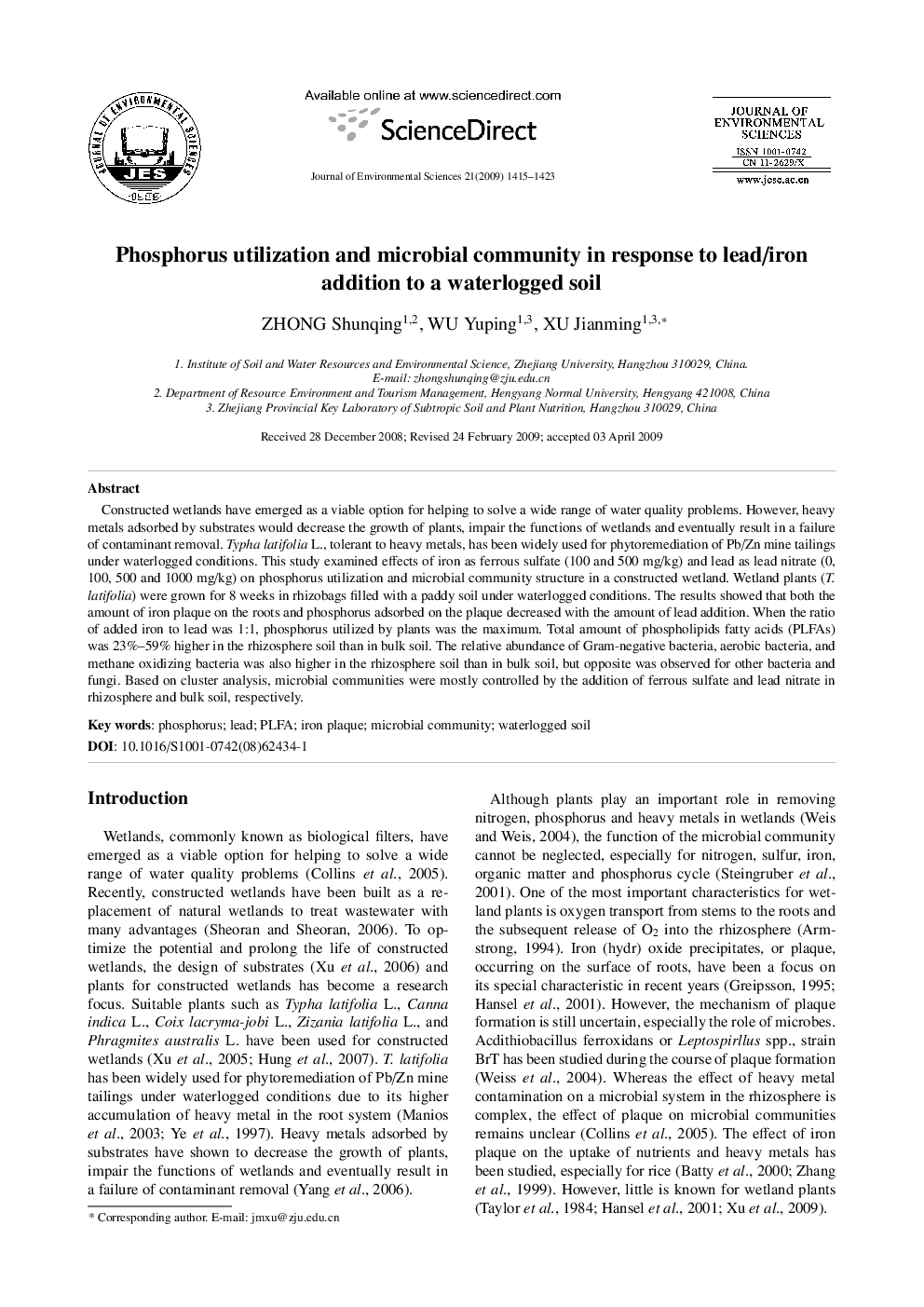| کد مقاله | کد نشریه | سال انتشار | مقاله انگلیسی | نسخه تمام متن |
|---|---|---|---|---|
| 4455878 | 1312534 | 2009 | 9 صفحه PDF | دانلود رایگان |

Constructed wetlands have emerged as a viable option for helping to solve a wide range of water quality problems. However, heavy metals adsorbed by substrates would decrease the growth of plants, impair the functions of wetlands and eventually result in a failure of contaminant removal. Typha latifolia L., tolerant to heavy metals, has been widely used for phytoremediation of Pb/Zn mine tailings under waterlogged conditions. This study examined effects of iron as ferrous sulfate (100 and 500 mg/kg) and lead as lead nitrate (0, 100, 500 and 1000 mg/kg) on phosphorus utilization and microbial community structure in a constructed wetland. Wetland plants (T. latifolia) were grown for 8 weeks in rhizobags filled with a paddy soil under waterlogged conditions. The results showed that both the amount of iron plaque on the roots and phosphorus adsorbed on the plaque decreased with the amount of lead addition. When the ratio of added iron to lead was 1:1, phosphorus utilized by plants was the maximum. Total amount of phospholipids fatty acids (PLFAs) was 23%–59% higher in the rhizosphere soil than in bulk soil. The relative abundance of Gram-negative bacteria, aerobic bacteria, and methane oxidizing bacteria was also higher in the rhizosphere soil than in bulk soil, but opposite was observed for other bacteria and fungi. Based on cluster analysis, microbial communities were mostly controlled by the addition of ferrous sulfate and lead nitrate in rhizosphere and bulk soil, respectively.
Journal: Journal of Environmental Sciences - Volume 21, Issue 10, 2009, Pages 1415-1423